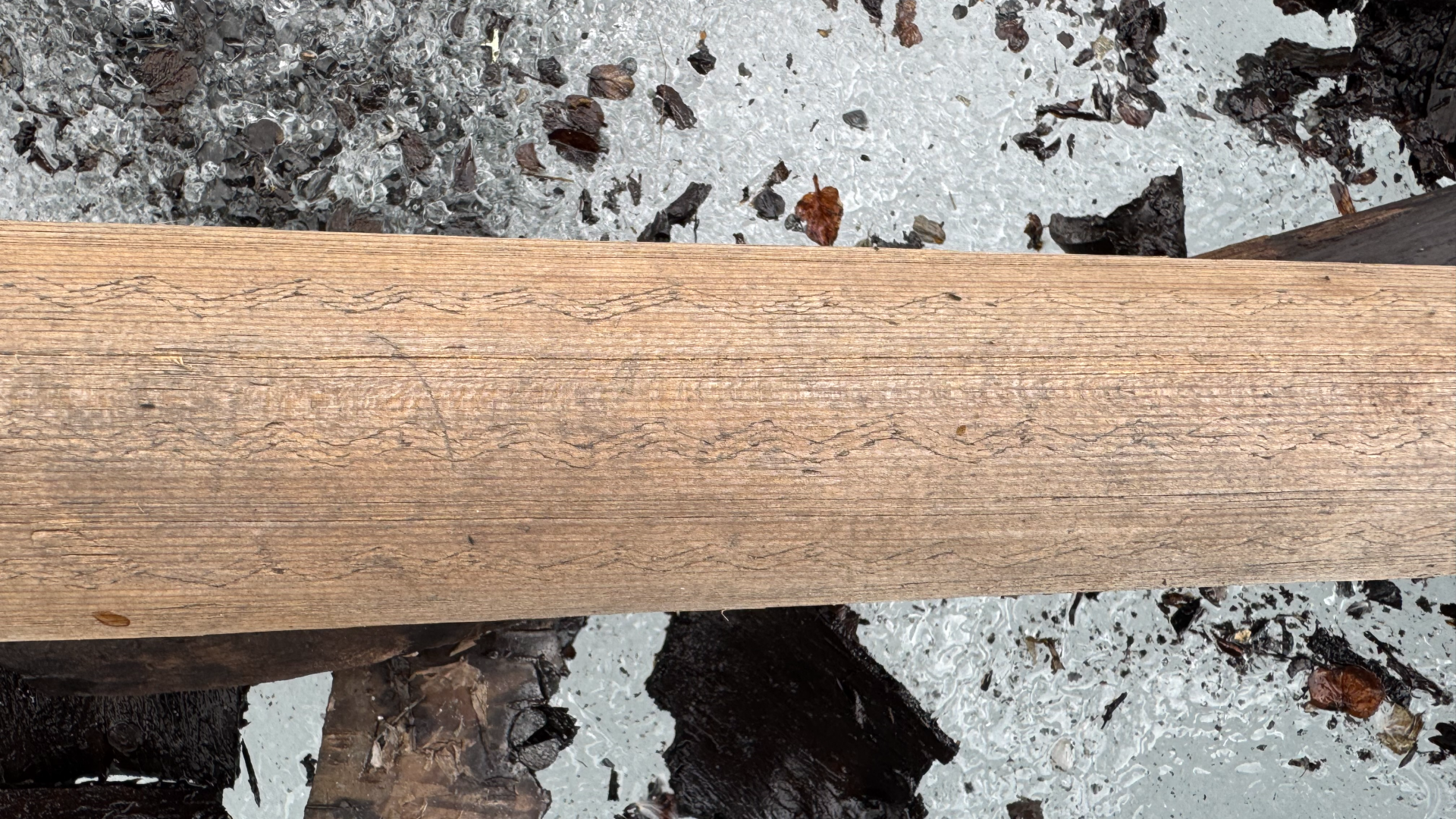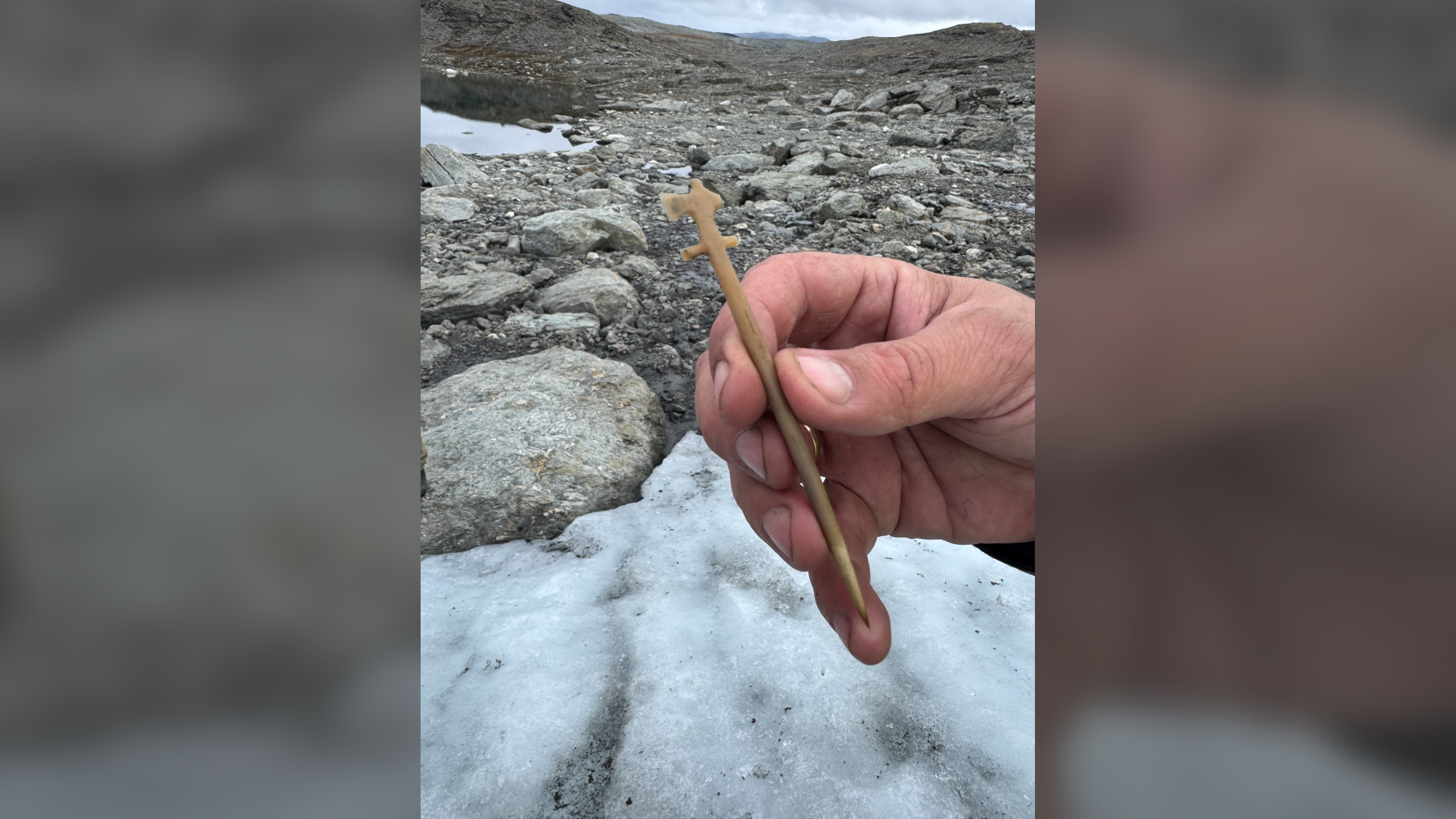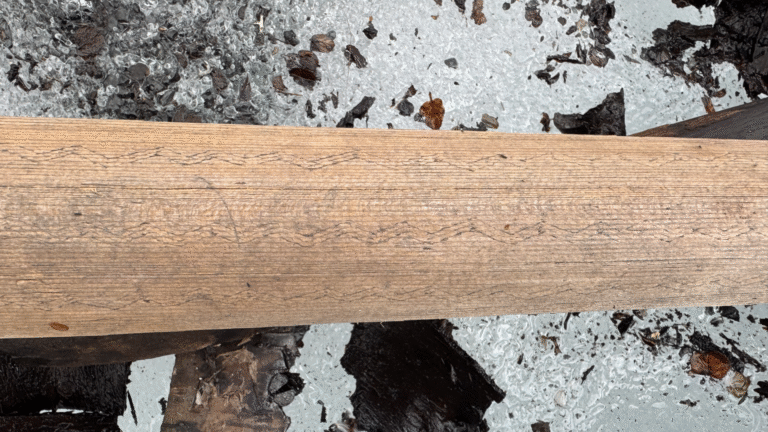High up in the icy mountains of Norway, archaeologists have discovered a unique 1,500-year-old reindeer trap, alongside several mysterious wooden objects, including a decorated boat oar that seems out of place 4,600 feet (1,400 meters) above sea level.
“These are items we would never find in ordinary excavations, including a pine oar and a clothing pin made of antler,” Leif Inge Åstveit, an archaeologist at the University Museum of Bergen, said in a statement from the Vestland County Municipality. “The pin is shaped like a miniature axe — truly exceptional finds.”
“A 1,500-year-old mass trapping facility composed of wooden branches that is literally melting out of the ice in front of our eyes is probably unique in both Norwegian and European contexts,” Åstveit said.
The team also found a significant number of reindeer antlers near the trapping facility. All had cut marks, suggesting that the animals were trapped, killed and potentially processed on-site.
In addition to the trap, the archaeologists recovered numerous artifacts assumed to be directly linked to the hunt, including iron spears, wooden arrows and three bows. The finds also included a delicate brooch made from antler and shaped like a miniature ax, which was perhaps accidentally dropped by a hunter during the kill, according to the statement.

But the archaeologists are stumped by the intricately carved wooden oar they found. Further study in the coming years may help to clarify why the oar was carried up the mountains.
Experts think the reindeer trapping site was preserved thanks to the onset of a cooling period in the mid-sixth century. Cold temperatures may have led to an increase in snowfall and ice, causing the hunters to abandon the site. The exceptional preservation of the antlers suggests the hunting facility was buried by snow and ice shortly after it was abandoned, according to the statement.

“This discovery opens up entirely new interpretations and understandings of how these facilities functioned,” Åstveit said. “The exceptionally well-preserved antler and wood materials will contribute significantly to research in the coming years.”
Global warming is contributing to the reemergence of ice-covered sites like this one, according to the statement. A similar site with reindeer-hunting weapons and blinds was discovered in Norway’s mountains in 2022. Nordic archaeologists also recently recovered 1,300-year-old wooden skis, a Viking horse bridle and a 1,700-year-old leather sandal melting out of glaciers.


